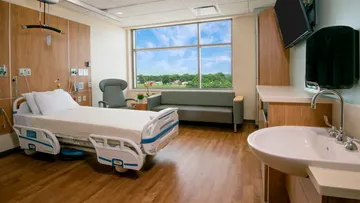Step 1 – REVIEW
What you’re already thinking about: What are the most contaminated areas in a patient room? I bet you have already thought about countertops, chair arms and backs, handles, and computer keyboards. You are thinking about anywhere hands have been. Don’t forget bedrails and the area around power and data outlets.
What you need to think about: How degraded are these surfaces? Deteriorated finishes need to be identified and addressed to mitigate unnecessary risk.
What to do next:
- Engage your Infection Control team in your assessment so they can explain what’s important and why from their perspective.
- Evaluate the conditions of frequently touched surfaces, which are going to be the most contaminated. Look for areas that are cracked, chipped, torn or damaged in any way, compromising their ability to be cleaned and disinfected properly. Finish materials that show wear of any kind are an infection control risk.
- Look for crevices – this is a perfect place for harmful microorganisms to live. For example, if there’s a backsplash, be sure the caulk is intact. Repair any dried, cracking or missing caulk around and between countertops and sinks.
- Check the connection between two materials, if you have an integral vinyl or wood edge trim on counters, for example, so nothing can penetrate the seam. And check the integrity of the wood finish coat which keeps it cleanable.
Step 2 - REMOVE
What you’re already thinking about: You’re working on a tight timeline, with a limited or non-existent budget and few resources to address your concerns. What can you accomplish with little time and limited resources?
What you need to think about: Now is a time to embrace a “less is more” attitude. What items in a patient room are non-essential? What items bring more potential risk than benefit?
What to do next:
- If you have private rooms with no visitors, get rid of cubicle curtains! They are magnets for infectious material. If you are working in a semi-private environment, can you find another way to obscure a view to provide patient privacy?
- Keep the patient chair or recliner and remove anything unnecessary from the room, like excess seating for visitors. Not only does this reduce the risk of infection, but it also reduces the turn time to clean and prepare the room for the next patient.
Step 3 – RINSE!
What you’re already thinking about: Clean, clean, clean.
What you need to think about: Wash, disinfect, rinse, repeat. Wait, what? Rinse? While disinfecting surfaces for COVID-19 or other serious infectious microorganisms is critical, it is also very important to follow complete cleaning protocol recommendations to rinse with clean water, either after cleaning but before
disinfection, or after disinfection.
In our experience, many healthcare facilities do not incorporate the recommended rinse step. The cleaning and disinfecting products themselves are toxic to occupants. Left unrinsed, these surfaces become sticky and damaged over time as the chemical build up wears down engineered coatings on upholstery and finishes, including flooring, creating cracks and vulnerable spots. Sticky and damaged = one more place for COVID 19 to live undetected.
What to do next:
Engage your Environmental Services Team now.
- You cannot overstress the rinse step enough. This is a critical part of the cleaning process. Commit to this best-practice initiative every time a room is turned over to keep cleaners and disinfectants working at the optimal level and maximize the life of your FF&E investments.
- Shadow your Environmental Services staff as they clean a bedroom or any patient care area. This will not only increase your awareness, but also encourage key front-line staff to share information you need to know. This will only strengthen your leadership effectiveness in operations, now more than ever, a critically needed skill.
If there’s anything we can do to help you evaluate your interior materials and furnishings, please contact Katy Frey, IIDA, WRID, EDAC.

